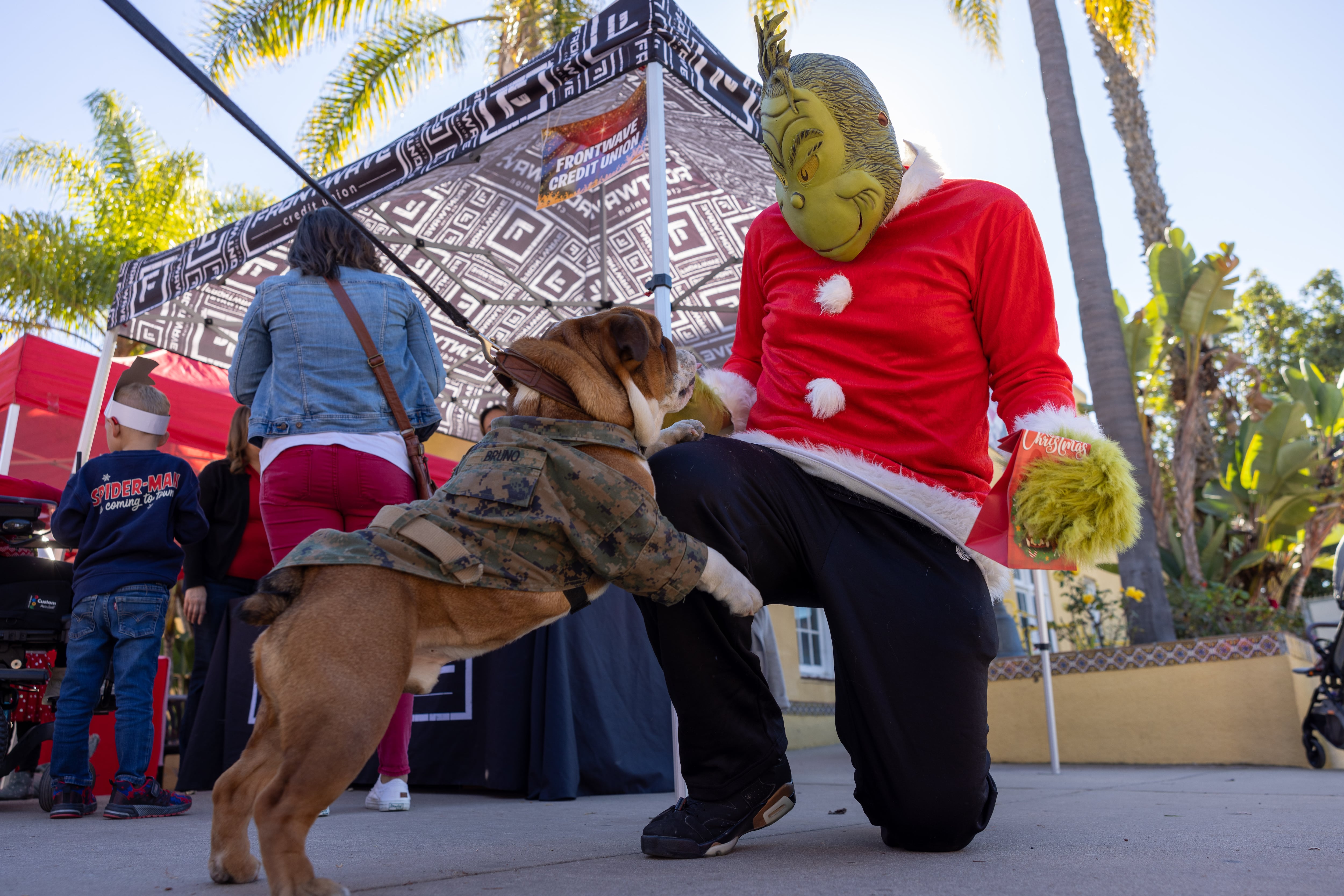Want a pay raise of more than $820 a month?
Interested in continuing your career as a technical expert — and raising your retirement payout by hundreds of thousands of dollars due to your longer and more high-ranking service?
Want to be your skipper's go-to guy when it comes to high-pressure missions, from fixing engines or handling ammunition to managing sophisticated radars or a flight deck?
If you said "Yes," to any of these, then you have your answer: Go mustang.
Related: 2 officers discuss career opportunities as a mustang
First classes with at least eight years of service who are looking for a challenge can earn a spot in the wardroom — and faster than any other commissioning route.
Sailors who are selected attend a four-week limited duty officer and chief warrant officer academy in Newport, Rhode Island. That's far easier and shorter than getting a bachelor's degree and going through the 12-week Officer Candidate School — let alone the years required for the Seaman to Admiral-21 Program, the Naval Academy, or Reserve Officers Training Corps.
The good news is that the Navy's hiring. The service expects to select 450 warrants and LDOs for fiscal 2016, the next year that promotions are available, and plans to grow the ranks over the coming years.
LDO and chief warrant are two branches from the same tree. Chief warrants are recognized experts who accomplish and lead sailors in many of the fleet's toughest jobs. Limited duty officers, by contrast, lead sailors in technically demanding divisions, departments and higher, similar to other officers.
"With CWOs, we're not trying to build commanders and captains, we're trying to build a person who knows a specific job and is very good at it," said Chief Warrant Officer 5 Mitch Allen, the CWO community manager at Navy Personnel Command, in an Oct. 1 interview. "So if you decide to take the warrant route, you better be sure you love and are passionate about what you do on a daily basis — because that's what you'll continue to do for the rest of your career."
Here's what you need to know to go mustang — and cash in:
Selection process
As with making chief, selection to LDO or CWO is by a selection board.
Applications are due each year by Oct. 1 and the board usually meets the following January.
For the past five years, these boards have selected roughly 450 sailors every year for LDO and CWO — about a 19 percent selection rate, Allen said.
That's a smidge harder than making chief, where opportunity has hovered around 20 percent for most of the past decade.
LDO accessions are available to 25 of the 29 total designators for the upcoming boards, while CWOs are accessing to 20 of 25 designators, officials said. The remaining designators are being phased out as people in those communities retire.
"What gets you selected for LDO or warrant officer are the same things that get you picked for chief," Allen said. "The big thing is [that applicants] need to be technically competent and have documented leadership and professional and personal qualifications — and you can't get away from having a little off-duty education in there. That's becoming more prevalent, and though it's not technically a requirement, the board is recognizing it more and more as something that sets someone apart."
Those chosen are commissioned and then sent off to the LDO/CWO Academy for the nearly five-week school before moving on to their first commissioned assignment at a new command.
The Navy has long recognized the benefit of commissioning sailors from the ranks and has been doing so since the days of sail — relying on their technical expertise and deckplate background to round out the officer ranks.
" The heart of this program, and its reason for being, is technical expertise and proven leadership," Allen said. "LDOs and CWOs for about the first two tours are the same people, but it starts to change when the LDOs reach department head."
LDOs will go on to lead ever greater teams of sailors, typically in technically demanding fields like Aegis radars, engineering, nuclear power or deck operations, to name only a few. Warrants, by contrast, are relied on for their technical know-how at the division and department level, often overseeing complex and difficult evolutions.
Financial rewards
Making the jump to the wardroom doesn't only give you more responsibility and a different place to eat chow — you'll be paid much more.
A first class with eight years who gets picked up for LDO in the first year of eligibility, for example, will get a monthly base pay increase of $819.30 to the new monthly salary of $4,047.90.
A chief, who's better paid than a first class, still gets a $453 pay hike for making ensign.
When you factor in other monies, like the housing allowance, that boost is even more pronounced. A married LDO, who's paid out at the O-1E level, in the Hampton Roads, Virginia, area will receive an extra $117 a month in BAH, compared to that E-6.
More promotions and time-in-uniform will also yield higher BAH, as well as special pays like career sea pay.
Officers have separate pay grades, O-1E through O-3E, for those who start their commissioned service after at least four years of enlisted service.
The military has a W-1 paygrade for warrant officers, but all Navy warrants start their commissioned career at W-2.
A chief with 12 years of active duty who gets picked up for warrant will receive a monthly base pay increase of $642.
All this translates to much more money at retirement, too. As an E-6, a sailor can only stay for 20 years and as a chief, 24 years. But when you switch to officer, you can serve longer — for huge retirement benefits.
For example, an E-6 who stays in and retires as an E-8 at 26 years — the longest he can stay on active duty — would get about $3,313 each month in retirement pay.
For comparison, an LDO who reaches commander and retires at 30 years would receive roughly $6,382 per month, according to Defense Department figures.
Over a 20-year period, after both had left the service, that retired LDO would receive a whopping $736,560 more than the retired senior chief.
The retirement pay jump is also huge for warrants. Consider a chief who stayed for 24 years, his limit, would receive $2,636 each month.
By comparison, a W-4 who punches out at 30 years of service would get $5,378 each month. Twenty years of that retirement pay is $1,290,720, an increase of $658,080 over the retired chief.
LDOs: Hardly 'limited'
Mustangs' only training beyond their years of deckplate experience is the four-week LDO/CWO Academy they attend after they've put on their officer rank — a finishing school that teaches them administration and is known as "knife and fork school."
The "L" in LDO references that these officers can rise up to captain, O-6, and are barred from making admiral. But they serve as vital members of wardrooms and are often the most experienced and trusted officers. Many complete the same qualifications as their unrestricted line counterparts. Surface LDOs drive ships. Aviation LDOs qualify as professional aviation maintenance officers. Many serve in the fleet's most critical watch positions, like officer of the deck, engineering officer of the watch, or tactical action officer.
"There's not much that's limited about LDOs," said Cmdr. Bill Johnson, the LDO community manager for NPC.
"LDOs, too, are technical experts, but they're expected to grow into community leaders," said Johnson, who has been a commissioned LDO for 21 years. "Typical LDO career progression is two division officer tours. And then they'll do a principal assistant and then a department head tour before screening for command."
The rules also limit LDOs from being ship commanding officers, but some have gotten around the limitation by transferring to the unrestricted line officer community. Former LDOs are in command of one cruiser and one destroyer squadron, Johnson said.
LDO promotion to O-2 and O-3 is routine, with selection boards from O-4 up to to O-6.
Every LDO gets two looks for each selection board. If they fail to select, they usually retire in grade. But for those who move up, the chances to make captain are roughly 40 percent once they've reached commander.
While there are still many opportunities for LDOs, the community is shrinking, making way for more CWOs. There are now about 3,653 LDOs and 1,765 CWOs. By 2019, the LDO tally is expected to drop to 3,500 while CWOs rise to 1,937.
Overall, that amounts to an increase of 19 mustangs by 2019.
CWOs: Problem solvers
For sailors looking for answers, it's "ask the chief." But what happens when the chief doesn't know?
He goes to the warrant.
Chief warrants are technical experts who are expected to get their hands dirty throughout their careers solving the fleet's knottiest problems.
They stay in their technical specialties and don't move up into the senior leadership ranks, as do LDOs. They stay on the deckplates.
"The idea for the warrant officer is not to have a defined career progression in what jobs they fill from assignment to assignment," Allen said. "They stay in their technical specialty and do repetitive type tours such as division officers, principal assistants, the occasional officer in charge."
Because they are technically focused, the repetitive nature of the assignments is good as they continue to gain technical expertise.
"My specialty is aviation, and and it's not unusual for the warrants to stay in the organizational or the intermediate level of maintenance for an entire career," Allen said.
LDOs will do some of the same tours, but move higher into command and policy making in their given communities, while warrants stay focused on the details — and getting things done.
As long as a warrant remains a technical expert and continues to grow and lead, he or she can rise in rank.
But many wonder, why can't an E-6 apply for a warrant if they can apply to be an LDO?
"The reason is at the heart of what we do and are," Allen said. "To have that technical experience at a senior level, we're looking for someone with a lot of technical knowledge and someone we're not going to have to teach a job."
First classes, he said, typically have completed one to two tours. Allen said that's not enough technical experience to become a warrant, who must have at least three or four tours under their belt if they are to be go-to for chiefs in a technical quandary.
"If you love the job you do, then this program is for you and I encourage you to apply," Allen said. "If you don't like it, don't — because you will be miserable."
Who can apply
The rules regarding who can apply to become a chief warrant officer or a limited duty officer (with an ensign's commission) are straightforward:
Limited duty officer
■ A sailor who has spent at least a year as an E-6 and has at least eight, but no more than 16, years of active naval service. Except for the three years time in grade, these applicants must, in all other ways, be qualified for chief petty officer, including taking and passing the chief's test — which they can take early for this purpose.
■ Any chief, E-7 through E-9.
■ Any chief warrant officer (those selected become lieutenants junior grade).
Chief warrant officer
■ Must be a chief, E-7 through E-9, or chief-select.
■ Must have at least 12, but not more than 22, years of active naval service in the year of application.
All LDOs and CWOs
■ Must be a U.S. citizen; a high school graduate or equivalent; and have no court-martial, nonjudicial punishment or conviction by a civilian court (other than minor traffic violations) for three years as of Oct. 1 in the year of application.
Complete application information is available on the Navy Personnel Command website under the officer community manager section.
Source: Navy Personnel Command
Mark D. Faram is a former reporter for Navy Times. He was a senior writer covering personnel, cultural and historical issues. A nine-year active duty Navy veteran, Faram served from 1978 to 1987 as a Navy Diver and photographer.





